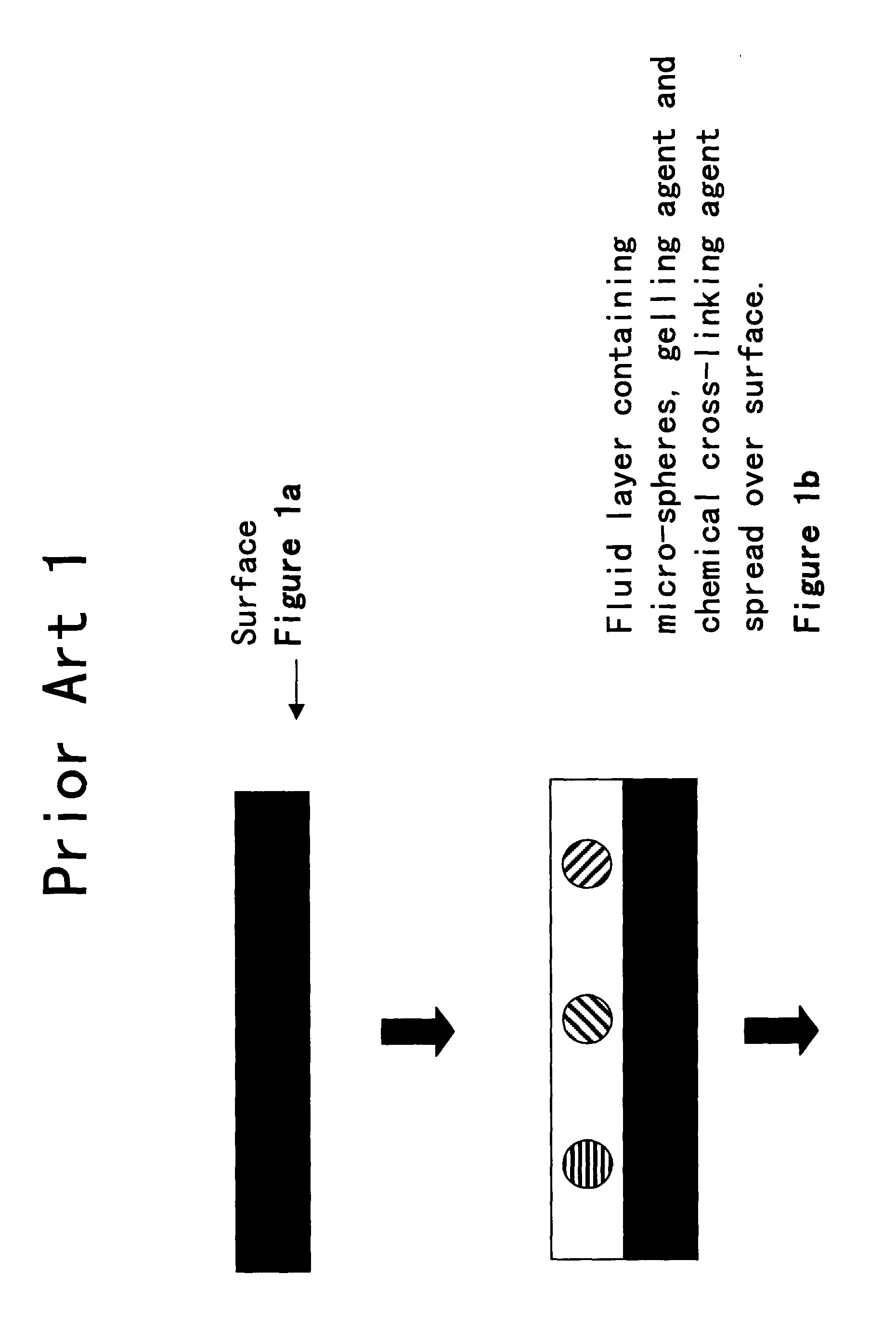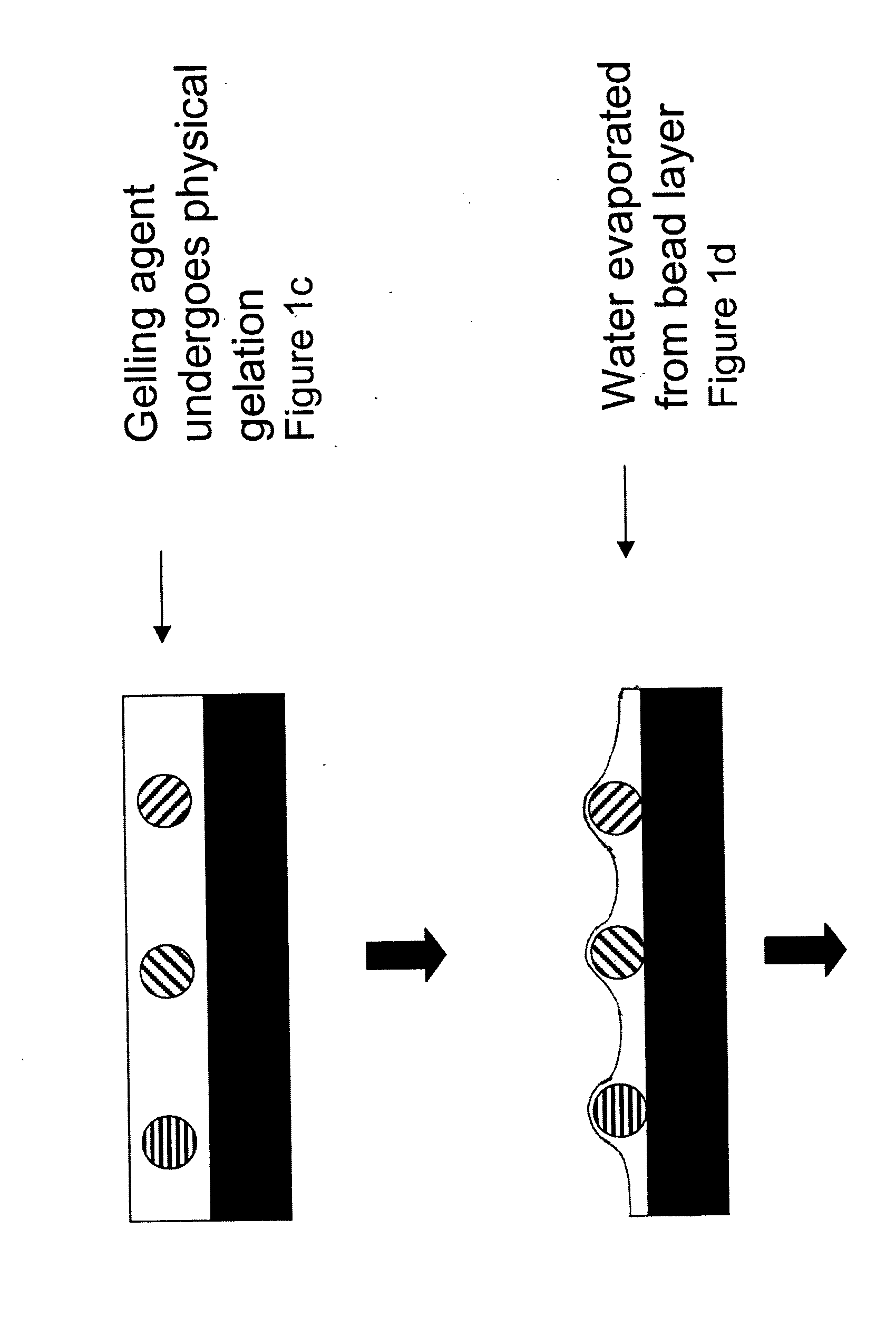Random array of microspheres
a random array and microsphere technology, applied in the field of biological or sensor microarray technology, can solve the problems of the inability to accurately predict the effect of the microsphere, so as to facilitate the access of the analyte, facilitate the preparation, and reduce the cost of the method
- Summary
- Abstract
- Description
- Claims
- Application Information
AI Technical Summary
Benefits of technology
Problems solved by technology
Method used
Image
Examples
examples
In the following example, Monte Carlo simulations are performed to determine the distance between the microspheres where introduced randomly. The results are then utilized in the analysis that leads to the lower and upper bounds of the Young's modulus of the receiving layer that will avoid lateral aggregation of microspheres.
In FIG. 6, 1000 beads (of 10μ diameter) were randomly dropped over an area of 1 cm2, such that no two of them overlap. Table 1 shows the distribution of nearest neighbor separation distances between the beads, and FIG. 7 is a plot of the data in Table 1. The simulation in FIG. 6 was repeated 20 times, and the average over all simulations is represented in Table 2.
Column 3 in Table 2 indicates that for this particular example (1000 beads / sq.cm; 10μ diameter beads), 95% of the beads are separated from their nearest neighbors by more than 30μ. 30μ is thus determined as “L” for this example.
The example was repeated for several cases of bead density and bead d...
PUM
 Login to View More
Login to View More Abstract
Description
Claims
Application Information
 Login to View More
Login to View More - R&D
- Intellectual Property
- Life Sciences
- Materials
- Tech Scout
- Unparalleled Data Quality
- Higher Quality Content
- 60% Fewer Hallucinations
Browse by: Latest US Patents, China's latest patents, Technical Efficacy Thesaurus, Application Domain, Technology Topic, Popular Technical Reports.
© 2025 PatSnap. All rights reserved.Legal|Privacy policy|Modern Slavery Act Transparency Statement|Sitemap|About US| Contact US: help@patsnap.com



